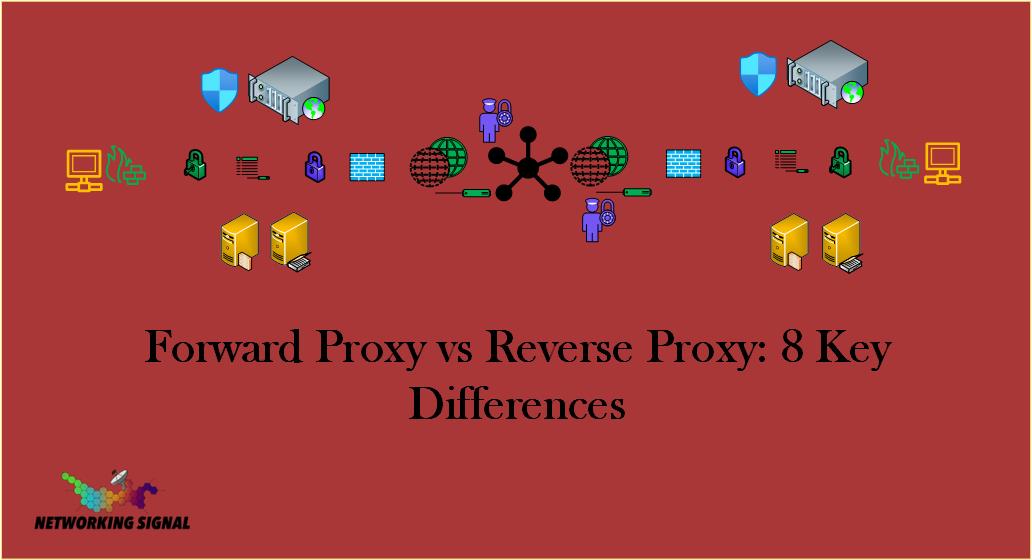Forward Proxy vs Reverse Proxy
A forward proxy is an intermediate server that sits between the client and the origin server. The client sends a request to the forward proxy, specifying the origin server as the target. The forward proxy then forwards the request to the origin server and returns the response to the client.
A reverse proxy is an intermediate server that sits between the client and the origin server. The reverse proxy receives a request from the client and forwards it to the origin server. It then returns the response to the client.
Forward Proxy vs Reverse Proxy: 8 Key Differences
Here are the key differences between forwarding proxy and reverse proxy:
| Forward Proxy | Reverse Proxy | |
|---|---|---|
| 1 | A forward proxy is used to request resources from a server on behalf of a client | A reverse proxy is used to request resources from a client on behalf of a server |
| 2 | In forward proxy, the client knows that it is communicating with a proxy server | In reverse proxy, the client is unaware of the existence of a proxy server |
| 3 | In forward proxy, the proxy server acts as an intermediary between the client and the origin server | In reverse proxy, the proxy server acts as an intermediary between the origin server and the client |
| 4 | The forward proxy can be used to bypass firewall restrictions | A reverse proxy cannot be used to bypass firewall restrictions |
| 5 | The forward proxy can be used to cache resources | A reverse proxy cannot be used to cache resources |
| 6 | The forward proxy can be transparent or anonymous | A reverse proxy is always transparent |
| 7 | The forward proxy can be used to filter requests | A reverse proxy cannot be used to filter requests |
| 8 | A forward proxy is slower than a reverse proxy because it has to request resources from the origin server on behalf of the client | A reverse proxy is faster than a forwarding proxy because it can directly serve requests from the cache |
What is the Role of Reverse Proxy and Forward Proxy in Firewall Security?
A proxy server is a computer that acts as an intermediary between a client and another server. A proxy server can be used to allow clients to access restricted websites, improve security, or speed up browsing by caching pages.
There are two types of proxy servers: forward proxies and reverse proxies. A forward proxy sits between the client and the internet, and it forwards requests from the client to the internet. A reverse proxy sits between the internet and the server, and it forwards requests from the internet to the server.
A forward proxy can be used to bypass firewalls, while a reverse proxy cannot. A forward proxy can also block certain types of requests from the client, while a reverse proxy cannot.
How do Forward and Reverse Proxy help when a smartphone is Hacked?
If a smartphone is hacked, a proxy server can help to protect the device by blocking requests from the internet that contain malware.
With the help of a proxy server, the client can connect to the internet and access websites that are blocked by the firewall. A proxy server can also improve security by filtering requests from the client.
A reverse proxy can also improve security by filtering requests from the internet. By sitting between the internet and the server, a reverse proxy can block certain types of requests, such as those that contain malware.

